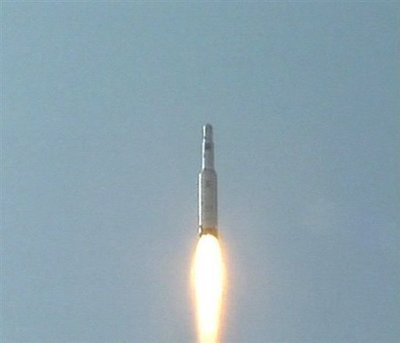Fresh satellite images suggest North Korea might be wrapping up engine trials on an intercontinental ballistic missile, fueling speculation of a full-scale flight test to come, a US think-tank said Wednesday.
Development of a working ICBM would be a game-changing step, bringing the continental United States into range and adding a whole new threat level to the North’s regular nuclear-strike warnings.
“The rocket engine test program may wind down by the end of this year,” The US-Korea Institute at Johns Hopkins University said on its closely followed 38 North website.
“If the engine tests are concluded, the next stage in development of the KN-08 road-mobile ICBM may be full-scale flight tests of the missile,” it added.
It stressed, however, that it was unclear just how successful the tests had been.
Regular satellite analysis has shown a major construction program underway at North Korea’s Sohae Satellite Launching Station since mid-2013, focused on upgrading facilities to handle larger, longer-range rockets with heavier payloads.
Although there is no doubt that North Korea has an extremely active ballistic missile development program, expert opinion is split on just how much progress it has made.
Images taken this month showed the gantry height on the main launch pad had increased to more than 50 meters, while a wider access road and rail spur capable of transporting larger rockets to the pad were either finished or nearing completion.
“These modifications could be completed by 2015,” the 38 North website said.
The images also showed evidence of new engine tests, including the presence of first stage rocket motors and distressed vegetation along the edges of the flame path.
The KN08 was first unveiled at a military parade in April 2012, but many analysts dismissed the models on show as mock-ups.
In December the same year, Pyongyang demonstrated its rocket capabilities by sending a satellite in orbit on a multi-stage launch vehicle.
But it has yet to conduct a test that would show it had mastered the re-entry technology required for an effective ICBM.
Over the past month or so, North Korea has conducted a series of short and medium range missile tests, which were largely seen as a muscle-flexing exercise in response to South Korea-US joint military drills.










